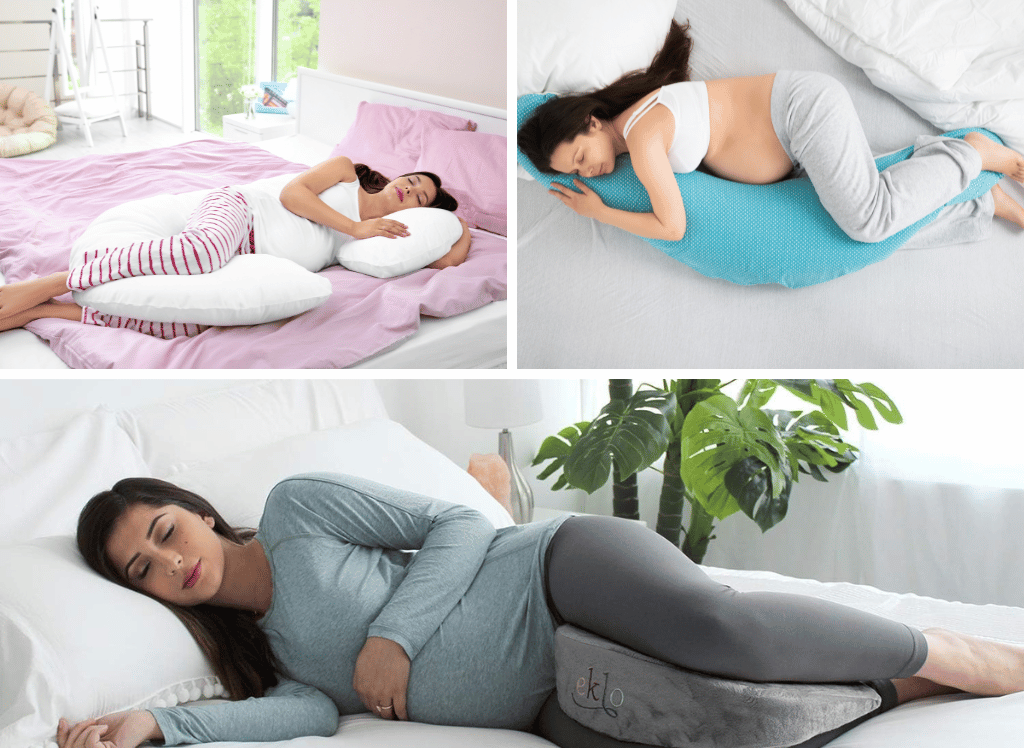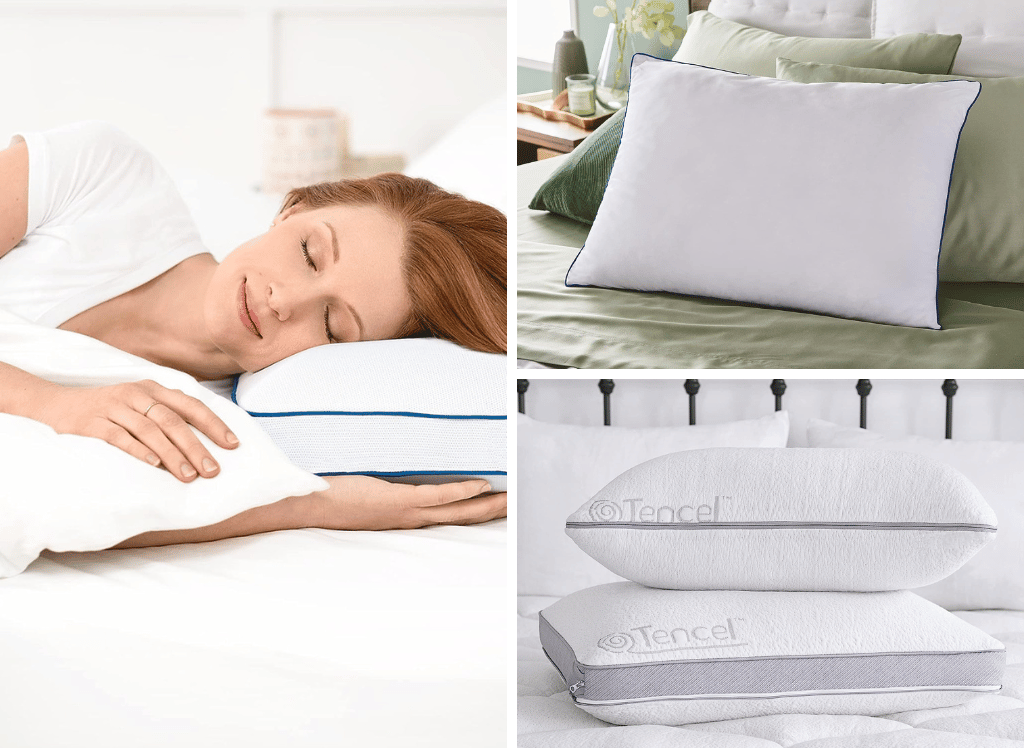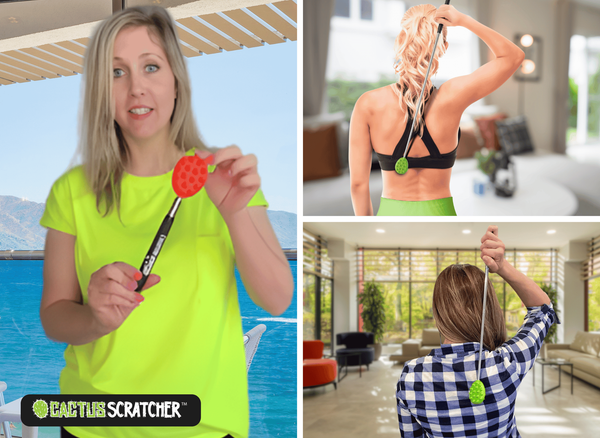Welcome to FactsFanatics. As an Amazon Associate, we earn from qualifying purchases (at no cost to you) from links found within these pages if you choose to buy something.
If you’ve been experiencing discomfort from hemorrhoids, also known as piles, recovering postpartum, or simply looking to enhance your personal hygiene routine, especially if you are sitting on the toilet, which can put pressure on the opening.
You might want to take a warm water bath in a small plastic tub or bag that could be the soothing solution, or a basin, to alleviate irritation caused by various substances. Simple to use yet rich in health benefits, sitz baths have many advantages and have become a go-to at-home treatment for many people, helping to relieve pain.
Sitz baths are also highly recommended for postpartum recovery, especially for new mothers, who might also consider using a cream. They are also recommended for baby-related care, especially after prolonged sitting during the week. They provide relief for sensitive areas like the vulva and perineum, including perineal pain, helping to relieve discomfort. A healthcare provider advises them, as they can help promote healing and comfort after childbirth, alleviating any painful symptoms.
This blog walks you through everything you need to know about sitz baths, from their benefits to creating the perfect setup for your legs, making the process easy. Whether you’re a seasoned fan or new to this therapeutic practice, we have all the details you need to identify the proper methods to incorporate sitz baths into your self-care routine.
Sitz baths can help soothe pain associated with a variety of conditions, including issues in the anal canal and discomfort in the scrotum. These conditions include hemorrhoids, piles, postpartum recovery, and other conditions, particularly those that can result in an irritated area, making sitz baths a popular hemorrhoid treatment. Sitz baths are an effective way to help ease pain and potentially cure various conditions, offer relief, ease discomfort, and promote healing.
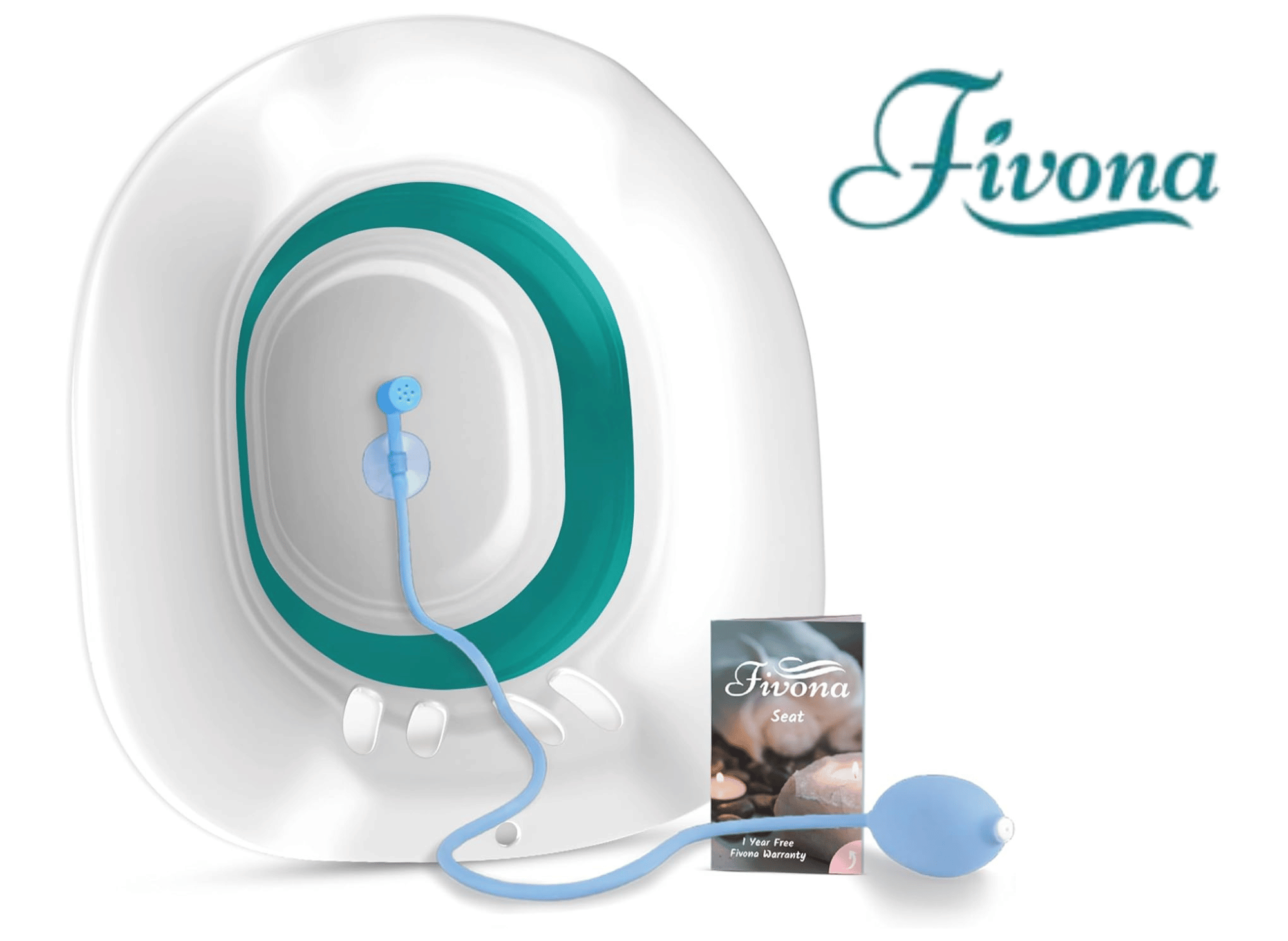
FIVONA Sitz Bath for Hemorrhoids Soak and Postpartum Care
Toilet Seat | Bartholin Cyst Tub | at Home Soaking Procedures for Man and Detox Vaginal Steaming for Women with Massage Hand Flusher
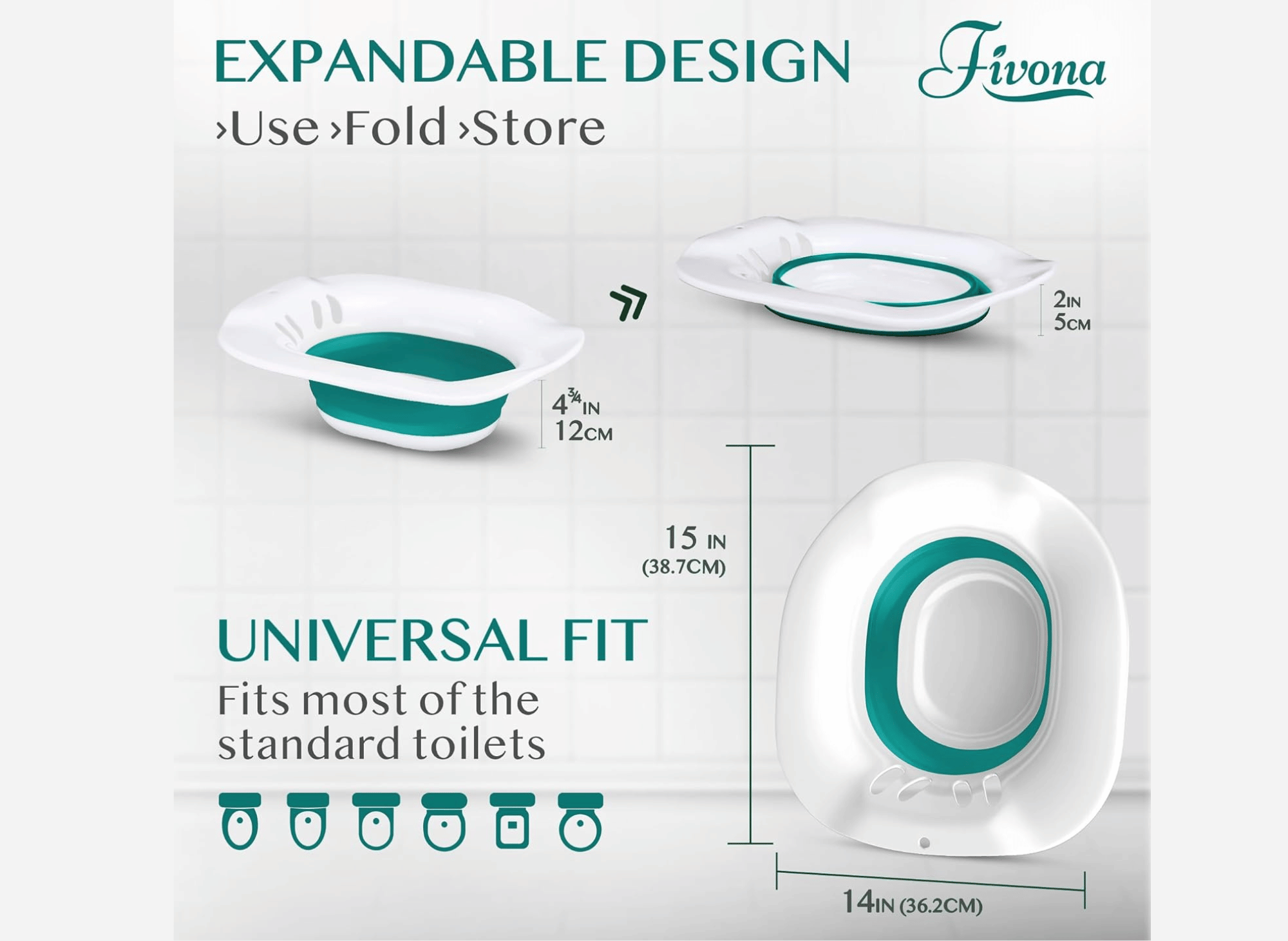
What is a Sitz bath for Hemorrhoids?
A sitz bath is a therapeutic bath where only your buttocks are submerged in a warm, shallow basin of water, providing ample space for relaxation, washing the affected areas, and allowing the water to drop gently. Think of it as a mini spa treatment you can easily do at home.
The term comes from the German word “sitzen,” meaning “to sit.” These baths have been used for centuries to alleviate discomfort in the perineal and anal areas, including the perineum and lower rectum, due to conditions such as hemorrhoids, postpartum recovery, or anal fissures, and may help drain excess fluid.
Hemorrhoids can be classified as internal and external hemorrhoids, which may arise from other causes. External hemorrhoids develop under the skin around the anus and can be particularly uncomfortable due to skin irritation and may require you to bend carefully, swelling, and the potential formation of blood clots.
In contrast, internal hemorrhoids develop within the lining of the anus and rectum, and issues with the mucosal lining can contribute to symptoms such as rectal bleeding and redness, which a surgeon may need to address.
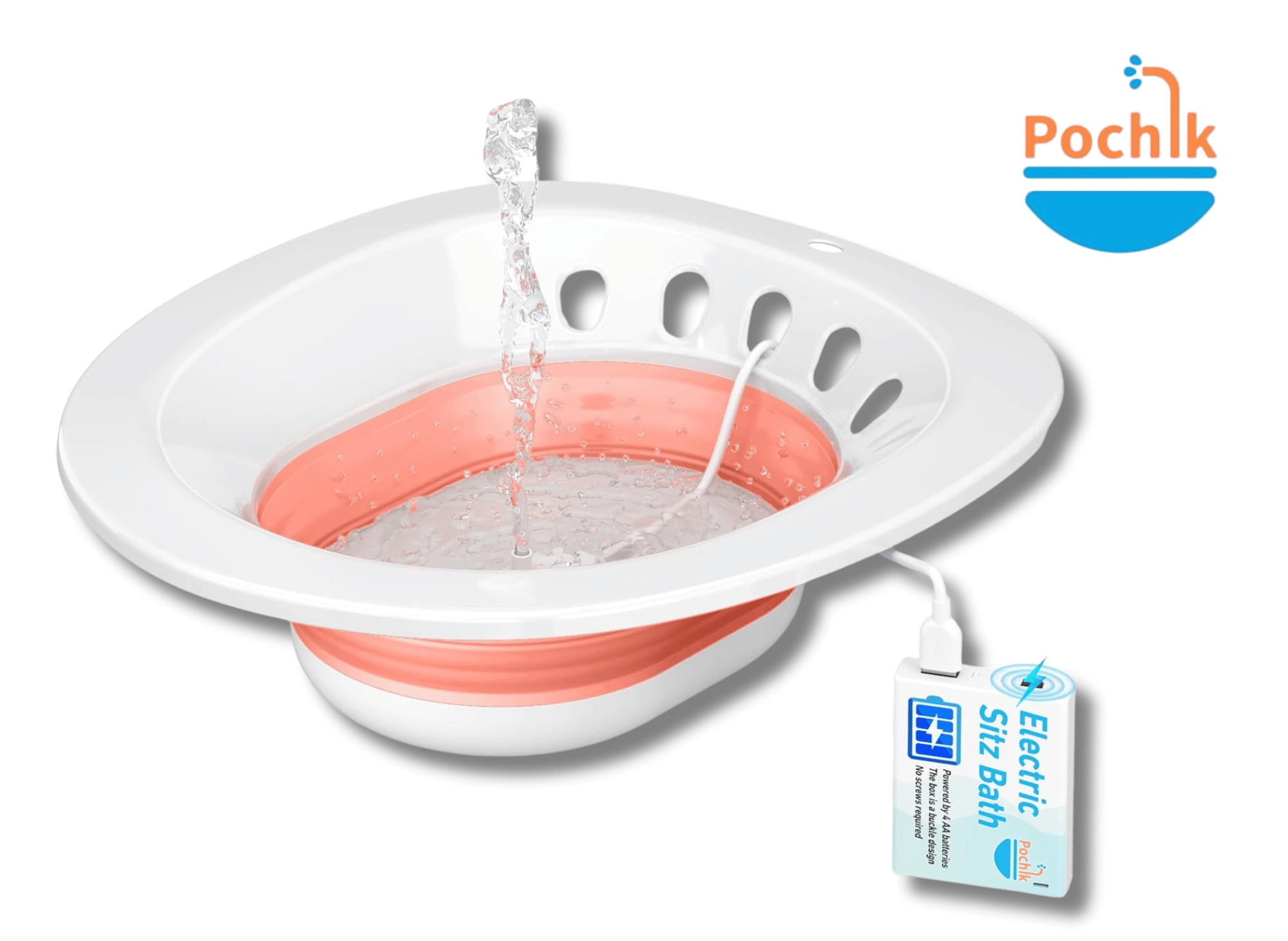
Pochik Electric Sitz Bath
Sitz Bath for Toilet Seat, Sitz Bath for Hemorrhoids Postpartum Care Tub, Sits Bath Kit for Women, Automatic Flushing, Collapsible
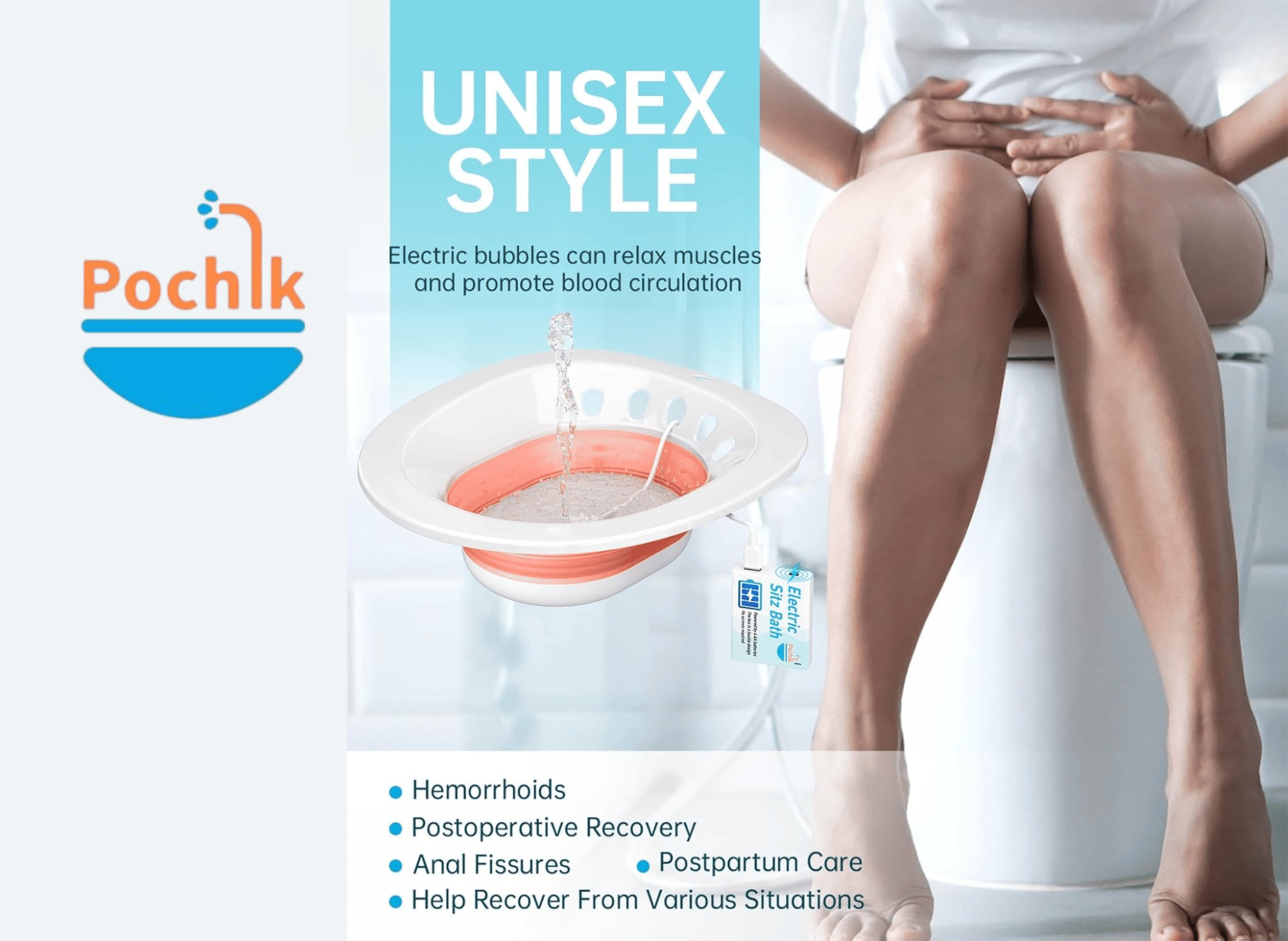
Why Should You Use a Sitz Bath?
Here are some key reasons, for example, why sitz baths are worth adding to your slightly larger wellness regimen, as you may want to purchase many products sold for this purpose. For patients, considering the price, to help increase overall health, including their benefits for the vagina.
Sitz baths can help reduce pain and itching caused by hemorrhoids, as doctor recommended, and other anal conditions, including pruritus, may require contacting a healthcare provider to present the best treatment options including those affecting the opening and other anal conditions.
If you experience severe pain, you should seek medical attention.
Relief for Hemorrhoids
Sitz baths help reduce inflammation and pain caused by hemorrhoids. External hemorrhoids, which develop under the skin around the anus, can cause more discomfort and are often visible. Sometimes, a blood clot can form in an external hemorrhoid, eventually dissolving as part of the healing process. Still, you should consult your doctor if symptoms persist, especially if you experience a fever.
You can pour warm water, as the warm water boosts blood flow to the affected area, but you can also consider using only water for maximum comfort. However, as water cools, it may lose some of its effectiveness. It can lift discomfort around the anal sphincter and reduce the risk of infection while accelerating healing and offering soothing relief.
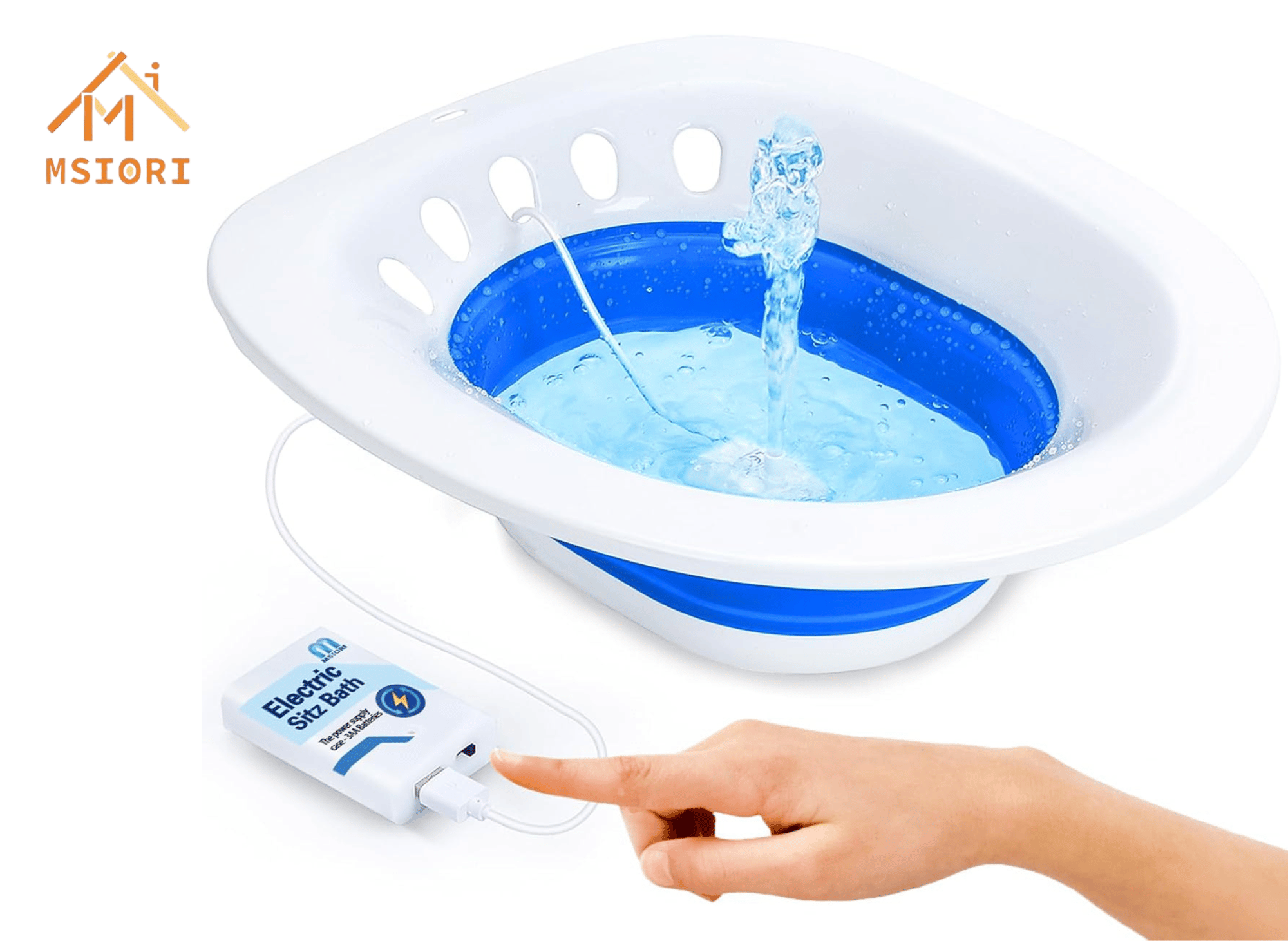
Msiori Electric Sitz Bath
Sitz Bath for Toilet Seat, Sits Bath Kit for Women, Sitz Bath for Hemorrhoids, Automatic Flushing,Hip Bath Bowl, Foldable
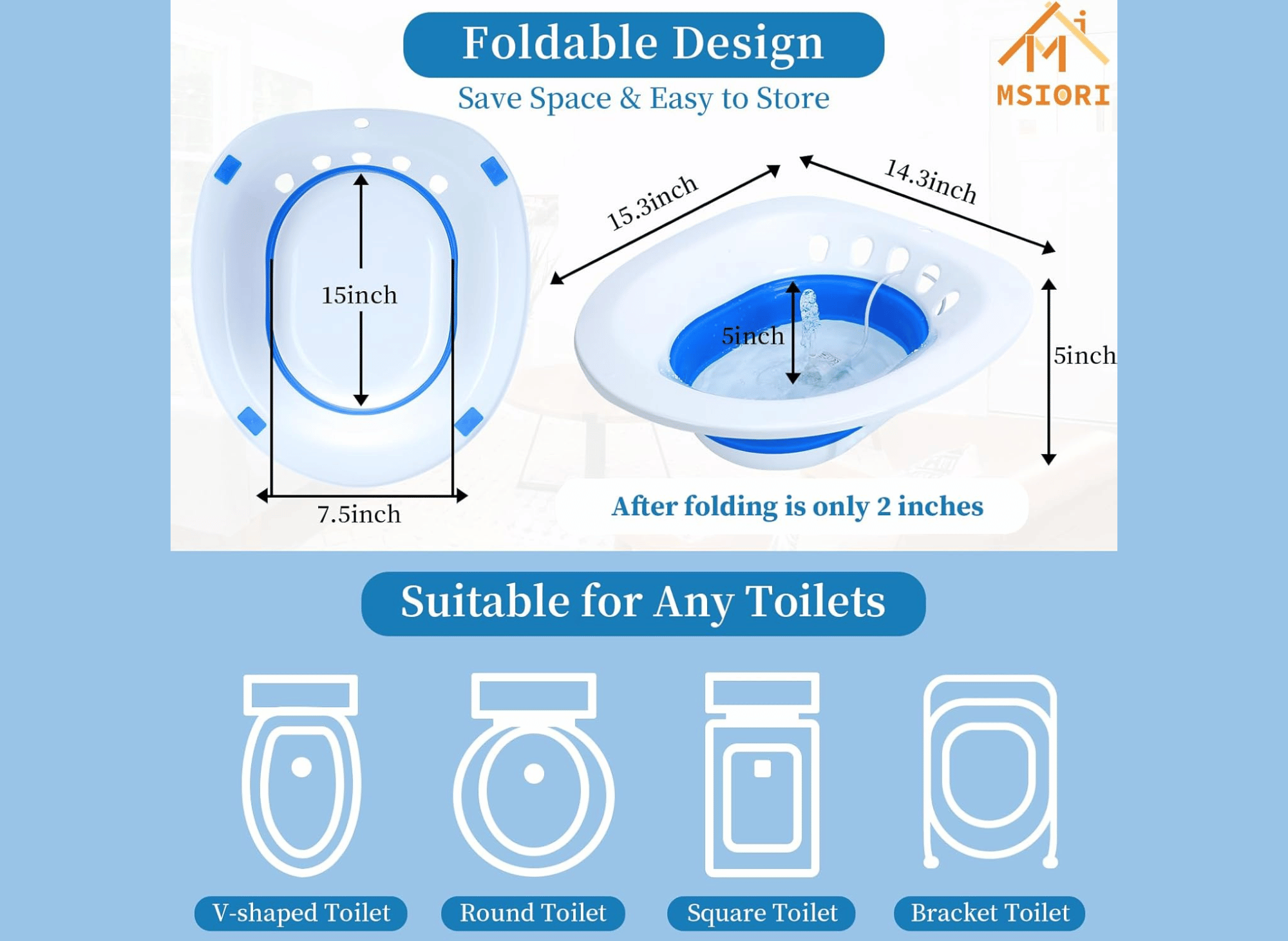
Postpartum Recovery
New mothers often experience perineal discomfort after childbirth, especially during childbirth. A soothing sitz bath, a warm and comforting experience, can be complemented with a hair dryer for added warmth, especially if you have puffy areas. It can ease swelling, promote healing of stitches, and provide much-needed relaxation, especially after a long day.
Sitz baths are also recommended after certain surgeries, such as episiotomy, to promote healing and comfort, particularly during pregnancy. In cases where postpartum recovery involves surgery or other perineal surgeries, sitz baths can aid in recovery and pain relief, with minimal risk.
Soothe Bartholin Cysts
Bartholin cysts can cause significant discomfort. They can happen when the Bartholin gland becomes blocked, leading to painful swelling and pain, which are common symptoms associated with Bartholin cysts.
The word sitz refers to the specific type of bath that can help improve blood flow to the genital area, including the genitals. It may also be helpful before a flexible sigmoidoscopy, making it a great tip to share with a friend. Sitz contributes to faster healing, reduces swelling, and encourages drainage, sometimes acting as a local anesthetic to soothe discomfort.
General Hygiene and Cleansing
Suppose you’re looking to enhance your personal hygiene routine. In that case, you should take a sitz bath in your own bathtub, as it can be a gentle and effective way to cleanse and rejuvenate sensitive areas, using a plastic bag to store essential oils.
Before use, follow specific instructions, and you may consider adding salt for enhanced benefits before your subsequent use. And scrub the sitz bath seat or toilet bowl thoroughly to maintain proper hygiene and prevent infection, ensuring nothing is left unclean. Providing the original water remains clear.
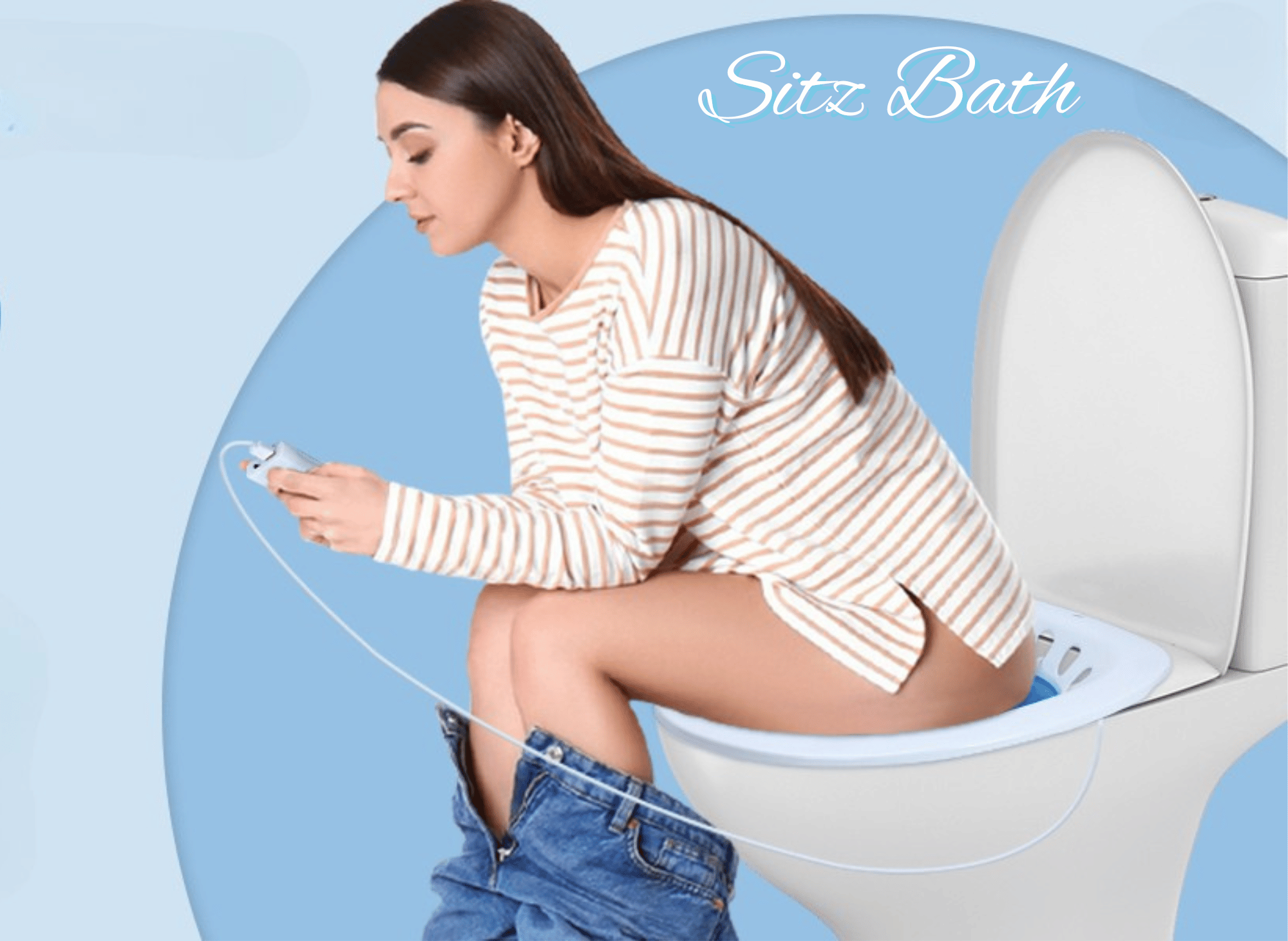
How to Prepare a Sitz Bath
Creating the perfect sitz bath is easy and should be prioritized upon your return home, and it works best with the proper setup. Before you begin, consider the size of your sitz bath seat or tub to ensure it fits your toilet and addresses any problems with size. It provides enough water depth for a deep, comforting soak, possibly using a box for better organization. And volume for comfort. And adequate water coverage, which you can easily find in any local store.
Here are the steps to get you started, including how the sitz bath should be performed, to impact your life positively. :
Types of Sitz Baths
You can create a sitz bath using either a sitz bath seat or a standard bathtub, as discomfort can occur in both situations.
- Sitz Bath Seat: Designed to fit over your toilet, this accessory offers a convenient and more targeted sitz bath experience.
- Bathtub: If you prefer, you can use your bathtub. Just add a few inches of warm water to submerge your perineal area.
Water Temperature and Additives
The warm water should feel comfortable, ideally between 94°F and 98°F. For added therapeutic properties, you can mix in items like:
- Epsom Salts for pain relief and reducing swelling
- Essential Oils like lavender for a relaxing experience
- Baking Soda to help with irritation
Step-by-Step Instructions
Prepare Your Bath
Fill your sitz bath seat or bathtub with warm water up to the recommended level. Add any desired additives.
Position Yourself Comfortably
If using a sitz bath seat, place it securely on your toilet. For bathtubs, sit so that the affected area is fully submerged.
Relax and Unwind
Sit for 15–20 minutes. Regardless of your age, you can use this time to read or close your eyes and relax.
Gently Dry the Area
After your bath, pat the area dry gently with a clean towel to prevent irritation, ensuring you do not use too much water. A sitz bath's relaxing effects can last up to 70 minutes after you finish the tub.
Sitz Bath Seat vs. Bathtub
Whether to use a sitz bath seat or a bathtub depends on your preferences and needs. Here’s a quick comparison:
Some people also prefer to combine a sitz bath with a shower for enhanced hygiene and comfort, and consider using a bag to store their bath essentials.
Sitz Bath Seat - Pros
- Convenient and portable
- Targeted treatment
- Can include additional features like a flusher for massage-like relief
Sitz Bath Seat - Cons
- Smaller water capacity
- Limited comfort for extended sessions
Bathtub - Pros
- Larger soaking area
- Ideal for full-body relaxation
Bathtub - Cons
- Requires more water
- It may not always be as hygienic or focused
Alternative Treatments to Sitz Baths
While sitz baths are a tried-and-true method for relieving discomfort in the perineal area, there are several common noninvasive treatment alternatives, including a mixture of techniques that can help manage symptoms from hemorrhoids, postpartum recovery, and other related conditions.
These options are simple to use at home. They can be a great addition to your self-care routine, especially if you are experiencing diarrhea, to prevent overflow or discomfort. For treating hemorrhoids and issues like constipation.
One practical alternative is the use of warm compresses. To try this, soak a clean towel in warm water, gently pat it dry, and place it on the affected area for 10–15 minutes. This can be done thrice daily to help boost blood circulation, reduce swelling, and soothe discomfort. Always avoid scrubbing or rubbing the area, which can cause further irritation.
Adding more fiber to your diet is another way to ease symptoms, especially if you’re dealing with hemorrhoids or bloating. Fiber helps soften stools and reduces pressure on the veins in your rectum, which can help prevent straining and gas, contributing to better overall health and making bowel movements more comfortable, especially by ensuring you consume half of the recommended fiber intake. Many stores offer fiber supplements like psyllium husk or methylcellulose—just be sure to read the ingredients and follow the instructions to avoid complications.
Kegel exercises can be especially helpful for women who are pregnant or recovering from vaginal delivery. To perform Kegels, sit comfortably on a toilet seat or chair, squeeze the muscles you use to stop the flow of urine, hold for 10 seconds, then release. Repeat this process 10–15 times, three times per day, to improve blood circulation and support postpartum recovery.
Sometimes, your nurse or doctor may prescribe medical procedures or rubber band ligation medication to treat more severe symptoms, such as infrared coagulation or sclerotherapy. These procedures are designed to target swollen veins and provide relief from discomfort. Choosing a qualified healthcare professional is essential to ensure the procedure is safe and effective.
Good hygiene is essential for wound healing and to avoid complications. After using the bathroom, gently pat the perineal area dry with a clean towel and clean it with mild soap and warm water. Avoid scrubbing, and always rinse thoroughly to keep the area clean and comfortable.
Perineal massage is another gentle technique that can help reduce soreness and swelling, especially after birth, and for those with recurrent discomfort due to disease. You can sit in a shallow bath or use a sitz bath kit, then gently massage the anal canal and perineal area with your fingers or a soft cloth to improve blood flow and comfort.
Some people also find relief by using natural remedies like salts or baking soda in their bath. However, if you have diabetes, are pregnant, or have any concerns, it’s best to consult with your nurse or doctor before trying new ingredients to ensure they’re safe for you, especially since some ingredients can rarely cause adverse effects.
Enhance Your Sitz Bath Experience
Want to take your sitz bath ritual to the next level? Here are some tips and tools to amp up your experience:
- Invest in a Hand Flusher
Accessories like the hand flusher allows you to direct gentle streams of water to affected areas, adding a spa-like massage component that can help increase relaxation.
- Try Recommended Products
Consider options like the Fivona Sitz Bath Kit, which is known for its ergonomic design and ability to securely fit various toilet seat shapes.
Small things like choosing a comfortable seat or adding soothing additives can make a big difference in your sitz bath experience, especially if you manage disease-related discomfort.
Safety and Hygiene
While sitz baths offer significant benefits, maintaining cleanliness and following some precautions is crucial.
Cleaning and How to Gently Pat Dry
- Clean your sitz bath seat or tub thoroughly before and after each use to prevent the risk of infections.
- Use warm, soapy water and ensure all soap residue is rinsed off thoroughly.
Potential Risks
- Avoid using water that's too hot, as it could cause burns.
- Limit harsh additives like apple cider vinegar if you have sensitive skin or open wounds.
Expert Tips for a Better Experience
Frequency: If you're dealing with acute issues like hemorrhoids or postpartum recovery, use a sitz bath 2–3 times a day for optimal relief. Most people notice improvement in symptoms within a few days of regular sitz bath use.
- Test Water Temperature: Always test the water temperature with your wrist before sitting.
- Seek Medical Advice: If pain or discomfort persists, consult a healthcare professional.
Rejuvenate Your Body and Mind
Sitz baths are a simple yet incredibly effective way to relieve discomfort, enhance personal hygiene, and promote healing, aiding in the overall management of symptoms. Whether you’re recovering postpartum, managing hemorrhoids, or need a moment of relaxation, incorporating a sitz bath can make a world of difference.
In addition to sitz baths, consider including beans in your diet. Beans are a high-fiber food often recommended for patients to help prevent and manage hemorrhoids. They are a natural, fiber-rich option that aids in softening stool and improving bowel movements, which can reduce pressure and discomfort.
Consider the price for high-quality options available at pharmacies, or explore other options designed to make the process seamless and comforting, perhaps in a round shape for a better fit.
Learn the therapeutic benefits of sitz baths for hemorrhoids, postpartum recovery, hygiene, and other symptoms, as recently reviewed by healthcare professionals.
Thank you for reading!
Your friend,
Kelly
#HemorrhoidRelief #SitzBath #HemorrhoidCare #SelfCareTips #NaturalHealing #PainRelief #HealthAndWellness #HealingRoutine #PersonalHealth #WellnessTips
🛁✨💧🌿💆♂️💆♀️🙌😊🌸💖
